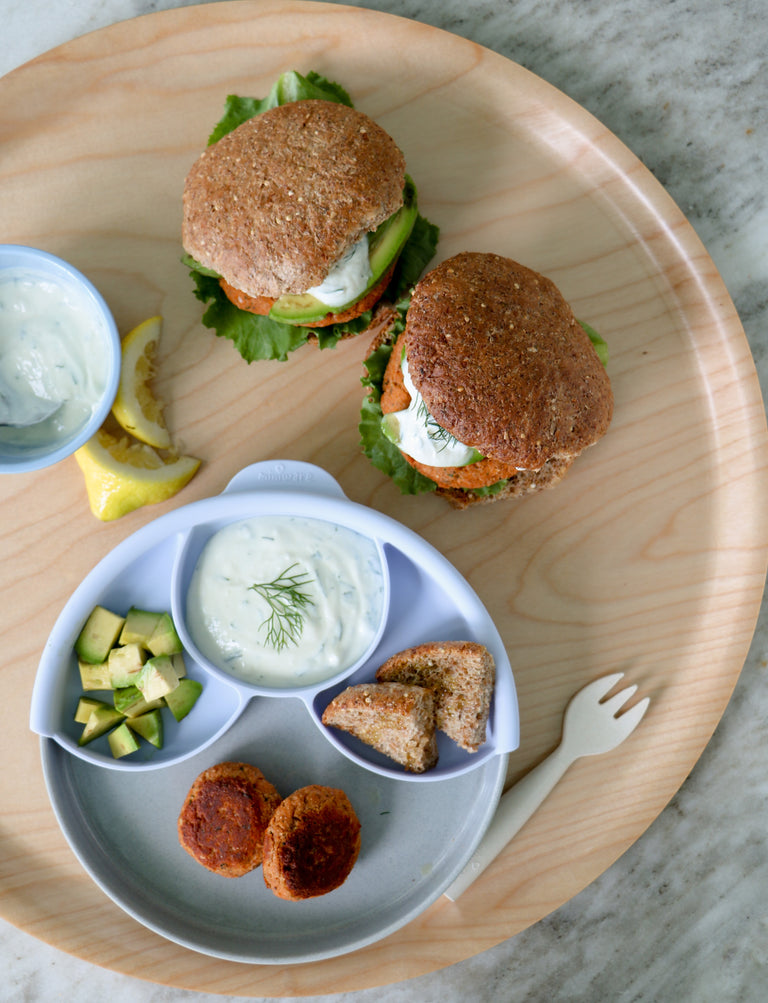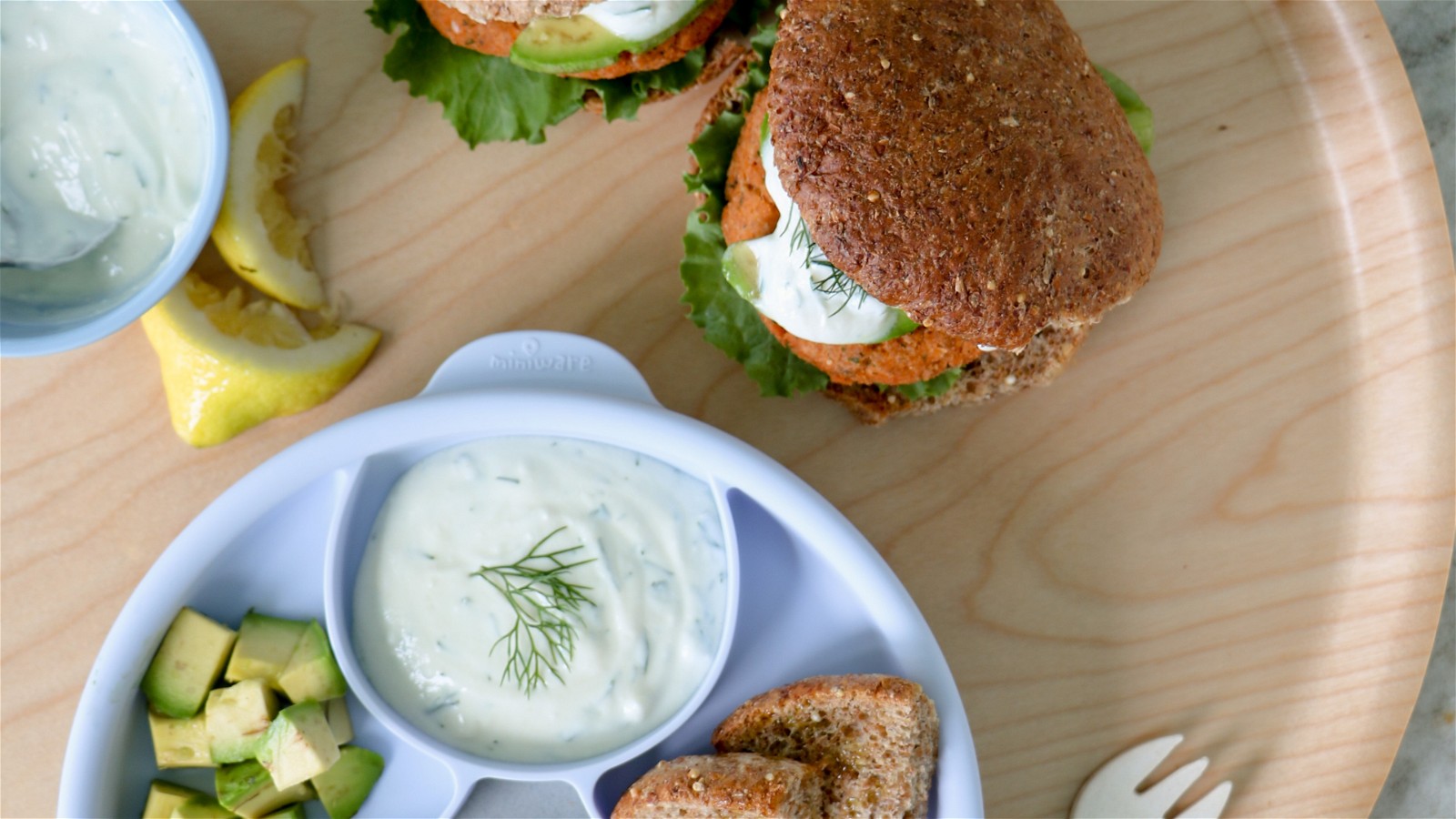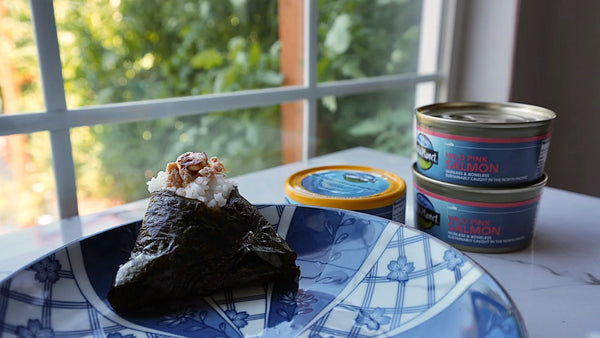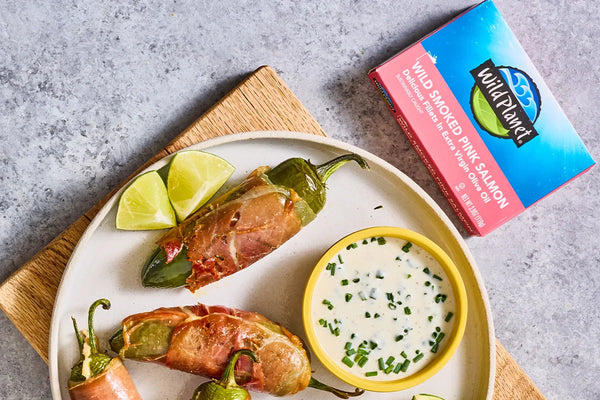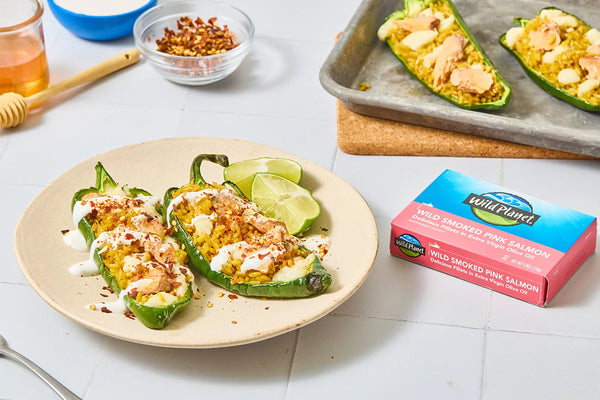When it comes to the daunting task of feeding your strong-willed, opinionated toddler or young child, we're a big advocate for feeding him or her the same meal parents or caregivers eat, wherever possible. Of course, this is easier said than done and sometimes downright impossible, but trying to adhere to this general principle is, in my opinion, better for the whole family in the long run. To completely cater to a toddler’s whims or desires when it comes to food is to set yourself up to become a short-order cook for a picky eater. No one wants that – deep down, not even your toddler!
My approach to feeding my daughter, Rose, has included seafood since almost the first month we began feeding her solids, around 6 months. Now, at 17 months, Rose loves seafood – especially salmon, which is on the menu at least once a week in our household. Incorporating salmon into Rose’s diet extends beyond mere taste. Since becoming pregnant and now as a mother, I am keenly aware of the importance of omega-3s in Rose’s diet.
Omega-3s are essential fatty acids that are, by their name, essential for proper bodily function. They are a component of the process of building new cells and promote the development and functioning of the nervous and cardiovascular systems. In addition, omega-3s help the body absorb nutrients, have a strong anti-inflammatory impact and may help prevent cancer and some autoimmune diseases. There is also evidence to suggest that omega-3s may prevent and treat ADHD, depression and other psychological disorders. Omega-3s will even make your toddler obey your every command, potty train her and transform her into a perfect sleeper. Okay, maybe they won’t do that, but honestly, it seems they contribute to all aspects of good health. For a growing child, the importance of omega-3s is therefore paramount.  When I began researching omega-3s to ensure I was properly incorporating them into Rose's meals, I learned that they must come from our diet, because our bodies do not make adequate amounts for optimal functioning. I also learned that not all omega-3s are created equal. There are three types of omega-3s – ALA, DHA and EPA. ALA is a short-chain fatty acid and DHA and EPA are long-chain fatty acids. Most of the benefits associated with omega-3s derive from the latter. ALA comes primarily from plant-based sources, such as flax or chia seeds, nuts, leafy greens, and some animal fat. It is a precursor to DHA and EPA, however the conversion rate in our bodies is very low. DHA and EPA are only found in marine sources such as seafood, algae or seaweed. Sprinkling flax seeds on your morning oatmeal is great, but it will not supply you with the more beneficial, long-chain fatty acids your body needs. This is why incorporating seafood into your child’s diet is especially important.
When I began researching omega-3s to ensure I was properly incorporating them into Rose's meals, I learned that they must come from our diet, because our bodies do not make adequate amounts for optimal functioning. I also learned that not all omega-3s are created equal. There are three types of omega-3s – ALA, DHA and EPA. ALA is a short-chain fatty acid and DHA and EPA are long-chain fatty acids. Most of the benefits associated with omega-3s derive from the latter. ALA comes primarily from plant-based sources, such as flax or chia seeds, nuts, leafy greens, and some animal fat. It is a precursor to DHA and EPA, however the conversion rate in our bodies is very low. DHA and EPA are only found in marine sources such as seafood, algae or seaweed. Sprinkling flax seeds on your morning oatmeal is great, but it will not supply you with the more beneficial, long-chain fatty acids your body needs. This is why incorporating seafood into your child’s diet is especially important.
Salmon is a top source of DHA and EPA, particularly wild salmon. Wild salmon is far superior to the farmed variety for its higher levels of omega-3s, not to mention being a more sustainable choice. However, wild salmon isn’t always available or affordable. Enter Wild Planet salmon – a mainstay on our grocery list. I love keeping our pantry stocked with canned wild salmon and sardines, because a delicious meal high in omega-3s and packed with protein is always within reach. Wild Planet products are the best out there when it comes to packaged seafood, particularly when it comes to levels of omega-3s. The salmon is canned fresh upon catch and cooked once in the can to retain optimal nutrition.  I have been making a variation of the recipe below since Rose was about 8 months old. It is a delicious way to incorporate salmon and omega-3s into her diet and mine, and a welcome change of pace from the typical salmon fillet we make often. I prepare these patties in the food processor to make the texture more baby and toddler friendly; however, they can easily be prepared in a bowl for a slightly chunkier texture. I like that this recipe is as delicious for adults as it is for toddlers – readily adaptable for any age. These patties are equally at home in miniature size on a highchair tray as they are served on a whole-wheat bun or atop a bed of tangy greens on your own plate. This dish is the perfect example of the type of food I like to serve my family. It is simple, packed with nutrition and delicious. Enjoy!
I have been making a variation of the recipe below since Rose was about 8 months old. It is a delicious way to incorporate salmon and omega-3s into her diet and mine, and a welcome change of pace from the typical salmon fillet we make often. I prepare these patties in the food processor to make the texture more baby and toddler friendly; however, they can easily be prepared in a bowl for a slightly chunkier texture. I like that this recipe is as delicious for adults as it is for toddlers – readily adaptable for any age. These patties are equally at home in miniature size on a highchair tray as they are served on a whole-wheat bun or atop a bed of tangy greens on your own plate. This dish is the perfect example of the type of food I like to serve my family. It is simple, packed with nutrition and delicious. Enjoy!

